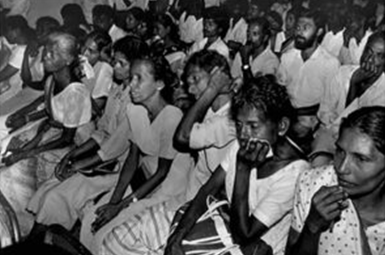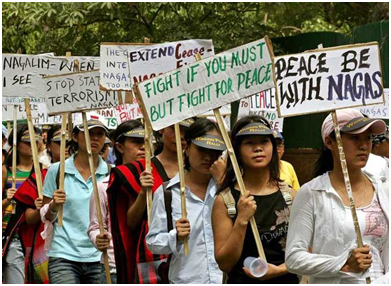
Imagine sitting in a room with women whose voices have been silenced for too long. Their words carry the weight of generations, yet they are rarely heard in peace negotiations.
“We have always been there,” one woman says, eyes heavy with the burden of history, “in the shadows, in the homes, in the streets.” As these voices echo in the corridors of power, the narrative of peacebuilding remains incomplete. This article delves into the gendered nature of conflict, the marginalisation of women in peace processes, and their transformative roles in post-conflict societies.
The intersection of gender and peacebuilding has been widely discussed in feminist literature, emphasising that war and peace are gendered processes. Women’s experiences, reactions, and needs are very different from those of men, but national and international policymakers often ignore these differences (Rehn & Sirleaf, 2002). Adoption of United Nations Security Council Resolution (UNSCR) 1325 on 31 October 2000 was a turning point with the endorsement of the participation of women in peace processes. It was seeking to address the disproportionate effect of armed conflict on women and girls and requiring their significant participation in peace and security decision-making. Nonetheless, there is still a lack of practical application, with women still being marginalised in formal decision-making positions in conflict resolution and reconstruction (UN Secretary-General Report, 2004). Despite international and national policies, women are underrepresented in peace processes. Between 1992 and 2019, they made up only 13% of negotiators, 6% of mediators, and 6% of signatories (UN Women, 2024). Gender equality provisions in peace agreements increased slightly from 14% in 1995 to 22% in 2019. In 2023, women continued to constitute less than 10% of negotiators and 13.5% of mediators, with Libyan and Yemeni conflicts leaving them out altogether.
Women’s exclusion from peace processes is hindered by several factors: prioritisation of short-term conflict cessation over long-term peace-building, women’s peace priorities conflicting with existing security paradigms, and fragmented mediation processes involving competing parties. Moreover, societal opposition to changes in conventional gender roles discourages women’s involvement. However, the inclusion of women in peace processes has been found to yield more durable peace agreements (International Institute of Peace, 2024). As Cynthia Enloe (1990) in Bananas, beaches, and bases: Making feminist sense of international politics contends, a gendered perspective is essential for deconstructing deeply rooted power relations. Peacebuilding is a complex process that evolves through the pre-conflict, conflict, and post-conflict stages. This process contradicts the traditional assumption of an absolute “post-conflict” closure, especially in the Global South, where intra-state wars tend to remain in a no war-no peace stalemate (Anderlini, 2000). Samreen Mushtaq (2018) maintains that in conflict areas, the line of demarcation between private and public spheres erases since violence penetrates into personal space and reaches both combatants and non-combatants. She points out that women cannot be simply classified as victims or peacebuilders. Even when considered as survivors or active resisters of militarised violence, it is important not to romanticise their resistance because such a move ignores the profound despair, trauma, and resilience that define their lives in war.
Case studies from Sri Lanka, and Nagaland illustrate how fragile peace agreements can be undermined by political instability and renewed violence. Women peacebuilders operate across all these phases, yet their contributions remain underrepresented in formal peace negotiations and post-conflict reconstruction efforts (Porter, 2003).
Case Study (a): Motherhood as a Space of Protest: Sri Lanka
The Mothers’ Front, emerging in 1990 amidst Sri Lanka’s violent state repression, exemplifies the strategic use of motherhood as a political tool. Comprising over 25,000 women protesting the enforced disappearances of approximately 60,000 men, the movement leveraged maternal grief to challenge an authoritarian state that weaponised both violence and rhetoric to suppress dissent.
Figure 1:Meeting of the southern Mothers’ Front.

Image Source: Stephen Champion (probably 1991)
Framing their activism within patriarchal constructs, these women utilised the culturally resonant discourse of motherhood, asserting their right to mourn and demand justice This maternalist approach carved a political space previously uncharted by opposition movements and made state retaliation complex. Most public protests, especially the 1991 Colombo rally, smashed the state narratives, revealing the contradictions between state-called family value entries and the state’s enforced disappearances. The state countered by constituting these women as failed mothers, projecting the blame on them for their sons’ fates and asserting its fatherly role in rehabilitating those suspected of being subversive. The Mothers’ Front’s display of grief and defiance nonetheless forced the government to go into defensive mode, contributing to the erosion of its legitimacy-a process that culminated in the political transition of 1994. Though the movement’s temporal effects were mediated through elite male political actors, this demonstrates how gendered identities were opportunistically turned against oppressive formations of power. The Mothers’ Front imbued women’s activism into Sri Lanka’s political discourse, showing the contingent usefulness of maternalist protest for the navigation of patriarchal and authoritarian constraints.
Case Study (b): Naga Mothers and the Peace Process
The women of Nagaland have traditionally acted as mediators and peace-builders, with the Naga Mothers’ Association (NMA) spearheading them. Formed in 1984 in Kohima, the NMA has fought a significant peace campaign against violence through its “Shed No More Blood” campaign. It has mediated between the state and rebel groups, brought together peace rallies, and fought for the very basis of human rights issues on the local scene. The NMA only deals with drug abuse, HIV/AIDS awareness, and women’s rights. They are giving rehabilitation to a substanceabuser at Mount Gilead Home despite serious threats from drug traffickers. Other women’s organisations like Watsu Mongdung and Tangkhul Shanao Long (TSL) have remarkably started dialogue towards peacebuilding. Watsu Mongdung took legal action for victims of rape committed by the army, and TSL intervened in negotiating between civilians and the Indian army. Though tribal rivalries continually disrupt cooperation, Naga women’s movements are still resilient in their quest for peace, justice, and communal welfare. Their tremendous courage has thus continued to shape the future stability of Nagaland.
Figure 2: Naga people have to engage with the national and international community as our interlocutors and allies.

Image Source: Reuters
Peace is not simply the absence of war and the ensuing silence. It is alive and breathing, nurtured in the hands of those who refuse to allow the final word of any conflict. If history has taught us anything, it is that women—most often unseen, most often unheard—have always served quietly as its guardians. They do not govern as empires; nor do they dictate terms at the barrel of a gun. They build peace the way rivers cut valleys: persistent, unyielding, and unquenchable. The question now becomes this: will the world ever see their power before it is too late? Will peace processes evolve from mere ceremonial participation into allowing women to lead, decide, and shape the future as they have always done in the shadows?
The future of world peace will not be negotiated in war rooms or constrained by fragile ceasefires. It will take place in the voice of women who, throughout history, have borne the brunt of peace. When the world finally listens to them, there will be not just peace but enduring peace that is not merely constructed but comes into being with great pain.
Leave a Reply